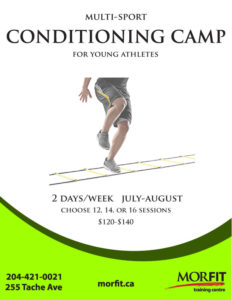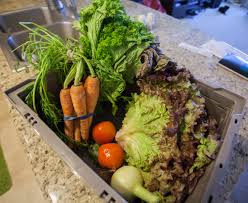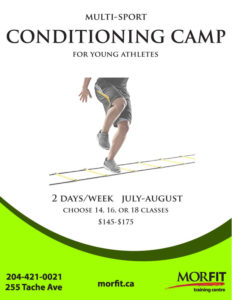At MORFIT we try to help our clients develop positive relationships with food. This can take a bit of work – mainly because as media consuming humans, we are constantly bombarded with what seems like continually changing evidence about the “healthiness” and quality of food. This information is frequently presented out of context in order to create a more attractive headline, soundbite, or clickable item. Eggs are bad! Eggs are good! Fat is bad! Fat is good! Sugar is evil! Stay tuned to find out if/when sugar will be vindicated…
(Check out the Fat and Sugar series on Ideas (Part 1, Part 2) to learn more about how our opinion of fat and sugar has changed with time.)
Take this video, for example. It tells you when and why to eat or not eat certain foods. Eat a banana at lunch because it will strengthen your immune system and improve your skin. Don’t eat a banana at dinner because it will lead to mucus formation and disturb digestion. Eat nuts at lunch because it lowers your risk of [high] blood pressure. Don’t eat nuts at dinner because it will lead to weight gain. Thinking critically, this leaves many questions on the table: Do these positive and negative effects happen at any of time of day or just at lunch and supper? What would happen if you had a banana at breakfast? Why would mucus formation and disturbed digestion after lunch be any more desirable than after dinner? Why does eating nuts at dinner but not at lunch lead to weight gain?
We could posit that mucus formation and disturbed digestion could be worse after dinner because they reduce your ability to get quality sleep. Hopefully these effects don’t affect your ability to do your job after lunch. Perhaps there is data to show that people who eat nuts at dinner tend to eat more during the day than people who eat nuts at breakfast or lunch, but if this data exists we are not presented with it.
All the foods in the video (bananas, apples, yoghurt, tomatoes, nuts, and oranges) are foods we would typically consider to be foods that could be eaten as part of a balanced diet while pursuing goals related to improved health and body composition – aka “good” foods (more on “good” foods later). For some people, including more whole foods like the ones in the video is a big step forward, regardless of what meal they are eaten at. Unfortunately, a video like this might make people hesitate about changing their eating behaviours. “I was going to have yoghurt for breakfast, but I’ve heard yoghurt at breakfast is bad because it makes my stomach very acidic. I will stick to drive-through breakfast instead.” “I was going to pack an apple for a snack today instead of chips, but I’ve heard apples are hard to digest and I didn’t want to ruin my afternoon so I stuck with chips.”
We can give the video producers the benefit of the doubt and say there may be something to the assertions in the video, but is this the type of information we should be sharing with the average person trying to improve their eating behaviours? Probably not. It is often more productive to start with big picture ideas and explore the finer details over time as interest and need increase. We often get caught in the minutia of eating behaviours when we should be looking at the big picture.
So if we’re starting with the big picture, where do we begin?
If we’re looking at food in the context of health and weight management, the most influential factor is the amount of food we eat*. If we consistently eat more than we need, we can typically expect to gain weight. If we consistently eat less than we need, we can typically expect to lose weight. This is a slight simplification, but it tends to hold true most of the time for most people.
*NOTE: We are excluding the effects of physical activity, exercise, stress, NEAT, metabolic rate, etc to keep the conversation on our relationship with food. How we relate food and exercise, how these other factors can help with health and weight management, and determining how much/what kind of food to eat are subjects for other blog posts!
The next piece to look at with respect to health and weight management is food quality. Is the food we’re eating providing us with the nutrients we need to be healthy? Sometimes efforts to manage our weight can be thwarted by nutrient deficiencies, regardless of whether we maintain a caloric deficit or surplus. Getting adequate nutrition from our diet is normally taken care of when the majority of our diet consists of a variety of nutrient dense, whole foods.
After we’ve figured out how much total food to eat and how to eat this quantity of food in a way that gives us the nutrition we need to function well as humans, we can start looking at more detailed aspects of eating. These more detailed aspects of eating include things like how many meals to eat per day, what times to eat them, whether bananas are better at breakfast or dinner, and whether we need any kinds of nutritional supplements.
Looking at the more detailed aspects of nutrition before we’ve found a way to consistently eat an appropriate amount of food and get the nutrients we need can be detrimental to developing sustainable, health promoting eating behaviours. If we start with fine details instead of big picture considerations, we put the cart before the horse. We’ll get more into this big picture idea of finding out how much to eat in another post.
We should also consider eating in the context of our happiness.
This can be related to weight management, but doesn’t have to be. Our eating behaviours, in addition to supporting our health and allowing us to manage our weight, should also contribute to – or at least not detract from – our happiness. It is in our interest to develop a positive relationship with food. The more positively we can relate to food, the more likely we are to adhere to eating behaviours that support our health, fitness, and body composition goals in the long term.
Does this mean we should be bff’s with our food? Well, maybe, but it doesn’t have to get weird. It means we should have positive or neutral associations with food rather than negative associations. This means not being scared to eat foods because of their sugar/calorie/fat/protein/carb/etc content and not feeling guilty for eating something (unless you are stealing your coworker’s lunch) or for having a drink. Foods are neither inherently good nor inherently bad and should not be labeled as such; you can have too much or too little of almost anything. Remember that when pursuing a health or body composition goal, it is the quantity and quality of foods eaten over the course of time that is most important, not whether you had a cheeseburger or a butter tart on the weekend.
We got a little bit of heat for having a birthday cake in the gym on Saturday (thanks for making us a cake, Melisa!). How could we, a gym, have bad food like cake on hand! Are we trying to torture our members by waving cake in their faces while they’re running on the treadmill?
Firstly, cake is not inherently bad. It is certainly a calorically dense and nutrient poor food that when consumed in large enough quantities can put the eater in a positive energy balance, increasing the likelihood of weight gain, or can displace other foods from the eater’s diet, decreasing their likelihood of meeting their nutritional needs. It is true that the more cake you eat, the more difficult it becomes to control your body composition and/or achieve adequate nutrient intake for health. However, a piece of cake here and there can easily be accounted for in the scheme of a person’s weekly caloric/nutrient intake in a way that still lends itself to weight management and metabolic health.
Secondly, once we’ve accepted that cake is not inherently bad and can be included in a healthy diet, having cake in our workout space doesn’t live up to the definition of torture. As our relationship to food becomes more positive, we start to understand how quantities of different foods can be manipulated to ensure healthy nutrition and support body composition goals. We also start to realize that a single piece of cake (or handful of broccoli) will not make or break our weekly nutrition.
So how do we develop a positive relationship with food? Here are a few strategies:
- Recognize that in the food industry it is someone’s job to make food more palatable, eatable, and sellable so that food companies can earn profit. Food products and commercials are engineered to make you over-consume. This is accomplished through manipulating salt, sugar, and fat content; food consistency; calorie density; emotion; food association memories; and many other factors. If you’re interested in learning more, check out the book Salt Sugar Fat by Michael Moss, reviewed here and here.
- Discover your food triggers. Sometimes we eat due to stress, social pressure, or habit. If you’re trying to decrease the total amount of food you eat or change the quality of the food you eat, pay attention to the environment in which you eat. Do you eat more or particular types of food when you’re stressed, hang out with friends, or watch tv? If you notice a pattern, you can start making more informed choices.
- Having difficulty saying no? Replace “I can’t” with “I don’t”. Saying “I can’t” implies a restriction. It undermines your sense of power and personal agency vis-à-vis your eating behaviour and creates a negative relationship with a food or eating behaviour. “I don’t” implies a choice and empowers you. It’s an affirmation of your determination and willpower. Shifting from “I can’t” to “I don’t” is a shift to a positive, empowered mindset that you can use to your advantage in developing sustainable, healthy eating behaviours.





